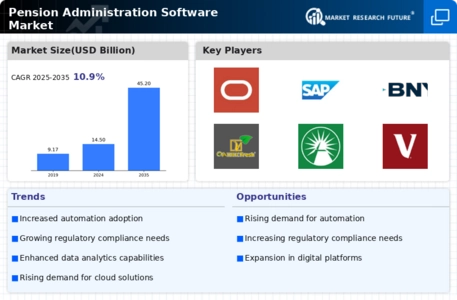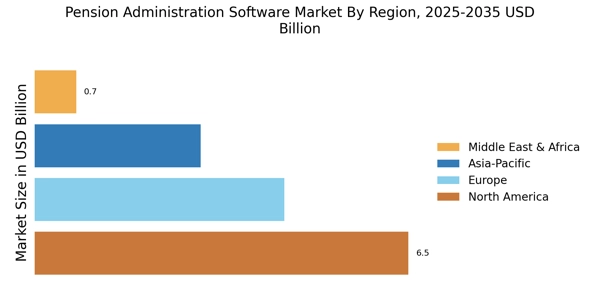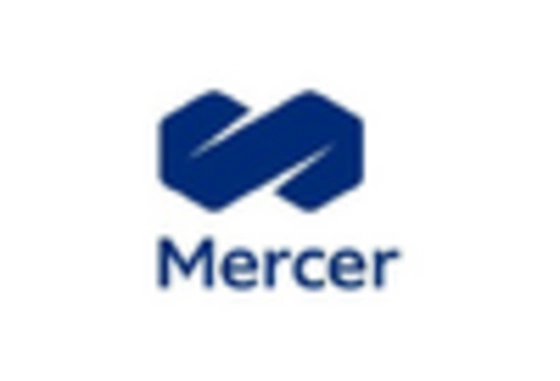Regulatory Compliance Requirements
The Pension Administration Software Market is increasingly influenced by stringent regulatory compliance requirements. Governments and regulatory bodies are imposing more rigorous standards for pension fund management, necessitating software solutions that can adapt to these evolving regulations. This trend is evident as pension funds must ensure compliance with laws such as the Employee Retirement Income Security Act (ERISA) and International Financial Reporting Standards (IFRS). As a result, software providers are enhancing their offerings to include features that facilitate compliance tracking and reporting. The demand for such capabilities is expected to drive growth in the Pension Administration Software Market, as organizations seek to mitigate risks associated with non-compliance.
Increased Focus on Financial Wellness
The Pension Administration Software Market is experiencing a heightened focus on financial wellness among employees, prompting organizations to invest in comprehensive pension solutions. Employers are recognizing the importance of providing employees with tools and resources to manage their retirement savings effectively. This trend is reflected in the growing demand for software that offers personalized retirement planning, educational resources, and user-friendly interfaces. As companies strive to enhance employee engagement and satisfaction, the integration of financial wellness features into pension administration software becomes essential. This shift is likely to drive growth in the Pension Administration Software Market as organizations seek to provide value-added services to their workforce.
Aging Population and Retirement Trends
The Pension Administration Software Market is significantly impacted by demographic shifts, particularly the aging population and changing retirement trends. As life expectancy increases, the number of retirees is projected to rise, leading to a greater demand for efficient pension management solutions. According to recent statistics, the number of individuals aged 65 and older is expected to double by 2050, creating a pressing need for robust pension administration systems. This demographic shift compels pension funds to adopt advanced software solutions that can handle increased volumes of data and provide accurate forecasting for retirement payouts. Consequently, the Pension Administration Software Market is likely to experience substantial growth driven by these demographic changes.
Rising Demand for Customization and Flexibility
The Pension Administration Software Market is characterized by a rising demand for customization and flexibility in software solutions. Organizations are increasingly seeking tailored software that can accommodate their unique pension plans and administrative processes. This demand is driven by the diverse needs of different pension funds, which may vary based on factors such as size, industry, and regulatory environment. As a result, software providers are focusing on developing modular solutions that allow for easy customization and integration with existing systems. This trend towards flexibility is expected to enhance the competitiveness of the Pension Administration Software Market, as organizations prioritize solutions that can adapt to their specific requirements.
Technological Advancements in Software Solutions
The Pension Administration Software Market is witnessing a surge in technological advancements that enhance the functionality and efficiency of pension management systems. Innovations such as artificial intelligence, machine learning, and data analytics are being integrated into software solutions, allowing for improved decision-making and operational efficiency. For instance, AI-driven analytics can provide insights into member behavior and preferences, enabling pension funds to tailor their offerings more effectively. The adoption of these technologies is expected to streamline processes, reduce administrative costs, and improve overall service delivery. As a result, the Pension Administration Software Market is poised for growth as organizations increasingly seek to leverage technology to enhance their pension administration capabilities.


















Leave a Comment